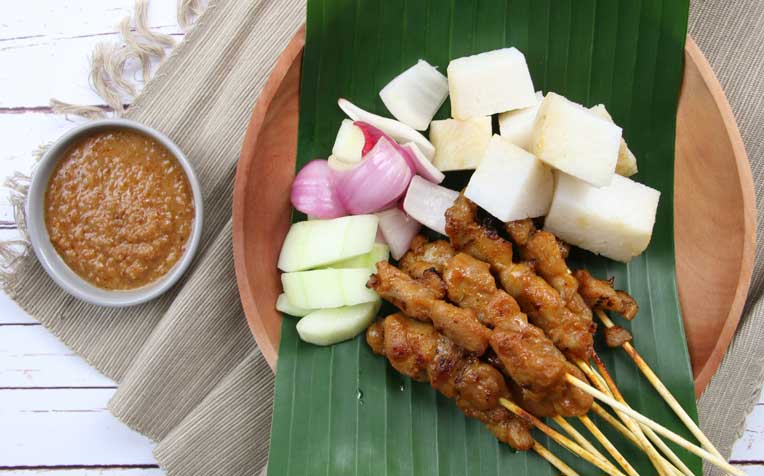
Can satay be a high-protein, moderately fattening alternative in the food court?
Tender cuts of meat marinated with spices. Glazed with oil. Barbecued over charcoal fire. Accompanied by flavourful peanut sauce. What else could we be talking about besides - Satay!
When you think about it in detail, satay seems like an unhealthy dish. Besides that flame-grilled stick of meat, satay also comes with other accompaniments like onions, ketupat and sauce. Let our experts from the Department of Dietetics at Singapore General Hospital (SGH), a member of the SingHealth group, lay down the pros and cons of each item for you.
Satay is high in protein and fat
Can satay be a high-protein, moderately fattening alternative in the food court?
√ High in protein x High in Fat
Satay is high in protein because it is mainly meat. It is also high in fat, especially saturated fat, from the blended vegetable oil and fatty meat parts used for its preparation. According to the Health Promotion Board, 10 sticks of beef satay has 9g fat and 29g protein while 10 sticks of chicken satay has 5g fat and 25g protein.
The saturated fat percentage of the total fat is 31% in chicken satay, 42% in beef satay and 46% in mutton satay. Therefore, satay may not a good alternative for high-protein, moderately fattening food.
Turmeric is often used to marinate satay. Is it good for health in any way?
Turmeric gives satay its characteristic yellow color. Several studies suggest that curcumin, the phytochemical found in turmeric, may act as an antioxidant with cancer-preventive effects.
However, there are no studies yet on turmeric (as a whole) in lowering disease risks when used in cooking. "The most reliable way to benefit from phytochemicals is still to have a diet that includes a wide variety of fruits and vegetables," say our experts.
How fattening is the peanut gravy? Is there anything redeeming about the gravy?
The main ingredients for peanut gravy are roasted ground peanuts, onions, garlic, lemon grass, belachan, salt, sugar and oil. A 29g serving of peanut gravy provides 77 calories, of which 75% comes from fat. It also contributes 138g of sodium per serving.
Generally peanuts are high in unsaturated fats, whereas onions and garlic contain some antioxidants compounds. However, the costs of eating oily satay and gravy far outweigh the benefits from the peanuts, garlic and onions.
Are there any health benefits from eating raw onions?
Onions are a rich source of dietary flavonoids called anthocyanins and of quercetin, a phytochemical. Some studies suggest that quercetin is associated with a reduced risk of coronary heart disease and stroke. Research also suggests that onions are linked to a reduced risk of certain cancers like stomach, colorectal and prostate cancer.
However, quercetin is sensitive to heat, and the degree of loss depends on the cooking method. Therefore, eating onions raw is a good choice. Further studies are needed to confirm the importance of flavonoids in preventing coronary heart diseases.
Ketupat is made from steamed white rice. Will eating it increase the glycemic load of the meal by a lot?
According to the international table of gIycemic index (GI) and glycemic load (GL), the GL of Thai white rice is 43 (serving size = 150g). High GL foods and drinks have a GL value of 20 or higher. Thus, it is important not to eat too much ketupat or steamed plain rice.
GI is a ranking of carbohydrates on a scale from 0 to 100, according to how they raise blood sugar levels after eating compared to white bread/glucose. Foods with a high GI are those which are rapidly digested and result in marked fluctuations in blood sugar levels.
GI represents the carbohydrate quality but not the quantity of the carbohydrates consumed. On the other hand, GL combines both the quality and quantity of carbohydrates in one number. It is therefore a better way than GI to predict blood glucose values of different types and amounts of food. The formula is: GL = (GI x carbohydrate amount) divided by 100.
So while the aroma of satay on charcoal is always wafting in and out of your favourite hawker center, try to resist the urge to order it every time you are there. As always, moderation is key to a healthy diet!
Ref: O24
Contributed by

















 Get it on Google Play
Get it on Google Play